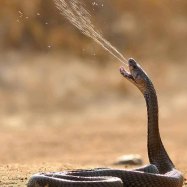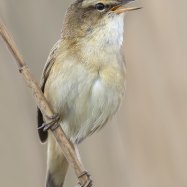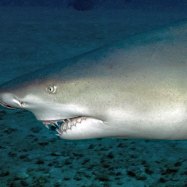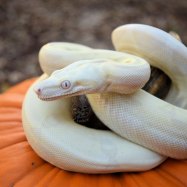
Texas Night Snake
Approximately 16-22 inches
The Texas Night Snake, also known as the Colubridae snake, is a slender reptile found in Texas. With a length of 16-22 inches and a cylindrical body, this snake is usually harmless to humans. It's an interesting creature to spot during your hikes in the beautiful state of Texas. Just be sure to admire it from a safe distance.
Animal Details Summary:
Common Name: Texas Night Snake
Kingdom: Animalia
Habitat: Deserts, grasslands, rocky areas
The Texas Night Snake: An Elusive Nocturnal Reptile
The Texas Night Snake, scientifically known as Hypsiglena torquata, is a fascinating species of reptile found in the southwestern United States and northern Mexico. It is a member of the Colubridae family, which includes over 1,800 species of non-venomous snakes. These snakes are known for their slender bodies, non-poisonous nature, and diverse habitats.If you are ever roaming through the desert or grasslands of Texas, keep an eye out for this elusive creature Texas Night Snake. The Texas Night Snake is a master of camouflage, making it difficult to spot in its natural habitat. In this article, we will delve into the world of this mysterious reptile and uncover the secrets of its survival.
Taxonomy and Classification
The Texas Night Snake belongs to the Kingdom Animalia, Phylum Chordata, and Class Reptilia. Its scientific name, Hypsiglena torquata, is derived from the Greek words "hypsi", meaning high, "glena", meaning pupil, and "torquatus", meaning collared - a reference to the white collar-like marking on its neck.These snakes are classified under the Order Squamata, which includes all scaled reptiles such as snakes, lizards, and amphisbaenians. The Texas Night Snake is closely related to other night snakes found in the United States, such as the California, Sonoran, and Sierra night snakes.
Habitat and Distribution
The Texas Night Snake is a versatile species that can be found in various habitats, including deserts, grasslands, and rocky areas. They are particularly fond of areas with loose soil or sandy substrates, which allows them to burrow and hide during the day.Their geographical distribution extends from the southwestern United States, including Texas, New Mexico, Arizona, and southern California, to northern Mexico Trapdoor Spider. They are also found in parts of Central America, including Belize, Guatemala, and Honduras.
Appearance and Behavior
The Texas Night Snake typically measures around 16-22 inches in length, making it one of the smallest snakes in the United States. However, some individuals can reach up to 30 inches in length. They have a slender, cylindrical body with a distinctive flattened tail, which they use to maneuver through tight spaces and rocky terrain.These snakes have light brown to dark brown coloration, with a series of distinct crossbands running down their body. These crossbands are often darker in color, giving the snake a unique appearance. Some individuals may also have a reddish tint to their bodies.
The Texas Night Snake is nocturnal, meaning it is most active at night, hence its name. During the day, it seeks shelter under rocks, logs, or in underground burrows to avoid predators and regulate its body temperature. They are shy and elusive creatures and will usually flee when approached, using their speed and agility to escape.
Feeding and Reproduction
The Texas Night Snake is a carnivorous reptile, meaning it feeds on other animals. Its diet primarily consists of small lizards, rodents, insects, and occasionally, other snakes. These snakes are constrictors, meaning they wrap around their prey and squeeze until it suffocates. They have short, sharp teeth, which they use to hold onto their prey while constriction takes place.Breeding in Texas Night Snakes typically occurs in the spring and summer months. Mating rituals involve a courtship dance, where the male and female intertwine their bodies and flick their tongues at each other. After breeding, the female will lay 3-9 eggs in a hidden nest, and hatchlings will emerge after 6-8 weeks.
Conservation Status and Threats
According to the International Union for Conservation of Nature (IUCN), the Texas Night Snake is listed as a species of least concern. However, there is little known about their population size and trends due to their elusive nature, making it challenging to assess their conservation status accurately.The primary threat to the Texas Night Snake is habitat destruction. As more and more land is developed for human use, these snakes lose their natural habitat and are forced to compete for resources with other species. They are also vulnerable to roadkill, as many snakes are killed when attempting to cross roads, especially during their active hours at night.
Interesting Facts
- The word “hypsiglena” means high cheek and refers to the distinct cheek scales on the snake’s face.- The Texas Night Snake has a unique defense mechanism. When threatened, it will release a foul-smelling musk from its cloaca, the opening used for excretion and reproduction.
- These snakes are efficient predators. They have a highly specialized sense of smell, allowing them to track and locate prey even in complete darkness.
- Despite being small, the Texas Night Snake has a relatively long lifespan, with some individuals living up to 10 years in captivity.
- These snakes are also known as whip snakes due to their quick movement and agility.
Conclusion
The Texas Night Snake may not be the most well-known or iconic animal, but it is undoubtedly an essential and fascinating part of the ecosystem. As we continue to expand and develop, it is crucial to preserve their natural habitats and ensure their survival.These elusive nocturnal creatures remind us that there is still so much to discover and learn about the natural world. So, next time you are out exploring, keep an eye out for the Texas Night Snake, and if you are lucky enough to spot one, make sure to admire it from a safe distance.

Texas Night Snake
Animal Details Texas Night Snake - Scientific Name: Hypsiglena torquata
- Category: Animals T
- Scientific Name: Hypsiglena torquata
- Common Name: Texas Night Snake
- Kingdom: Animalia
- Phylum: Chordata
- Class: Reptilia
- Order: Squamata
- Family: Colubridae
- Habitat: Deserts, grasslands, rocky areas
- Feeding Method: Carnivorous
- Geographical Distribution: Southwestern United States and northern Mexico
- Country of Origin: United States
- Location: Texas
- Animal Coloration: Light brown to dark brown with crossbands
- Body Shape: Slender, cylindrical body
- Length: Approximately 16-22 inches

Texas Night Snake
- Adult Size: Approximately 2 feet
- Average Lifespan: 10-15 years
- Reproduction: Sexual
- Reproductive Behavior: Males perform courtship rituals to attract females
- Sound or Call: Hissing
- Migration Pattern: Non-migratory
- Social Groups: Solitary
- Behavior: Nocturnal
- Threats: Habitat loss, road mortality, human persecution
- Conservation Status: Least Concern
- Impact on Ecosystem: Help regulate populations of small mammals and insects
- Human Use: Not significant
- Distinctive Features: Large eyes with vertical pupils, keeled scales
- Interesting Facts: Can emit a foul-smelling musk when threatened
- Predator: Birds of prey, other snakes
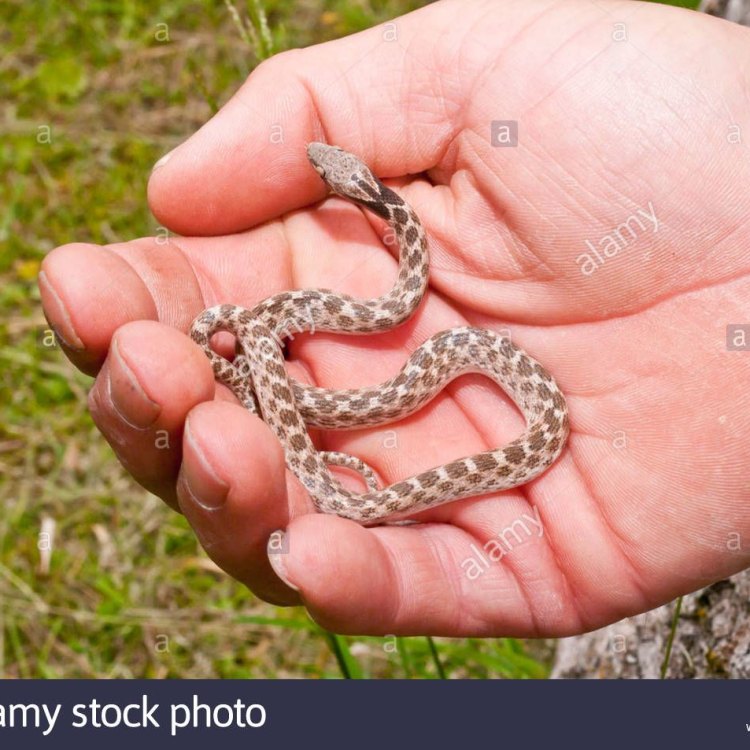
Hypsiglena torquata
The Enigmatic Creature of the Night: Introducing the Texas Night Snake
The state of Texas is known for its diverse wildlife, from majestic white-tailed deer to elusive mountain lions. However, there is one creature that often goes unnoticed and unappreciated – the Texas Night Snake. Despite its mysterious nature, this reptile has several unique features and plays a crucial role in its ecosystem. In this article, we will explore the fascinating world of the Texas Night Snake and learn about its behavior, characteristics, and impact on the environment PeaceOfAnimals.Com.The first thing that may come to mind when hearing the name "night snake" is a dark, venomous creature. However, the Texas Night Snake is anything but. This snake is a non-venomous species, making it harmless to humans. It belongs to the Colubridae family, which includes other species like garter snakes and racer snakes. Its scientific name is Hypsiglena torquata texana, and it is a subspecies of the Western Nightsnake.
Adult Texas Night Snakes can grow up to approximately two feet in length, making them relatively small compared to other snakes found in Texas. They have a slender body and a distinctive coloration of light brown or gray with darker brown or black blotches along their body. But what sets them apart from other snakes is their large eyes with vertical pupils, which give them a unique and enigmatic appearance.
These secretive creatures are mainly active at night, which is why they are called "night snakes Teddy Bear Hamster." They are most active during the spring and summer months when the temperatures are warmer. During the winter, they go into a state of hibernation known as brumation, where they become less active and seek shelter in rocky crevices or underground burrows.
The Texas Night Snake has a lifespan of 10-15 years, which is relatively long for a small reptile. They are also non-migratory and prefer to stay within their home range, which can vary from a few acres to several miles, depending on the availability of food and suitable habitat.
Like most snakes, the Texas Night Snake reproduces sexually, with mating occurring in the spring and early summer. However, before the male can mate with a female, he must perform courtship rituals to attract her. These rituals involve the male rubbing his chin and body along the female's body, which releases pheromones and helps initiate the mating process. Once the eggs are fertilized, the female will lay a clutch of 3-9 eggs in a hidden location, such as under rocks or logs. The eggs will then hatch after approximately seven weeks, and the baby snakes will be left to fend for themselves without any parental care.
The Texas Night Snake may not be as visible during the day, but they leave behind some evidence of their presence. If you happen to come across a Texas Night Snake, you may hear a hissing sound, which is their way of communicating. This hissing sound is produced by the snake's throat muscles when it is threatened or feels in danger, and it serves as a warning to potential predators.
Speaking of predators, the Texas Night Snake faces various threats in its natural habitat. One of the most significant threats is habitat loss due to human activities such as urban development and agriculture. This destruction of habitat can lead to a decline in the snake's prey, which can ultimately affect their survival and reproductive success. Another threat is road mortality, as these snakes are often found crossing roads at night, making them vulnerable to being hit by cars.
Unfortunately, some humans also pose a threat to the Texas Night Snake. Due to its secretive nature and association with other, more venomous snakes, many people often mistake the Texas Night Snake for a dangerous species and kill them out of fear or ignorance. This persecution of the Texas Night Snake can have a significant impact on its population, as well as the ecosystem it inhabits.
As secretive as these snakes may be, they play an essential role in their ecosystem. The Texas Night Snake primarily feeds on small mammals, such as rodents, and also consumes a significant number of insects. As a nocturnal predator, it helps regulate the populations of these smaller creatures, preventing them from becoming a nuisance or disrupting the balance of the ecosystem.
Despite the threats and misconceptions surrounding the Texas Night Snake, it is not considered a species of concern. In fact, it is listed as "Least Concern" on the International Union for Conservation of Nature's (IUCN) Red List, which means its population is stable. Texas Night Snakes are widespread and can be found in various habitats, from scrublands and grasslands to rocky hillsides and forests, making them adaptable to different environments.
When it comes to human use, the Texas Night Snake does not have any significant commercial or cultural value. However, they do have a unique feature that sets them apart from other snakes – their ability to emit a foul-smelling musk when threatened. This musk serves as a defense mechanism against predators and is a pungent reminder to leave the snake alone. Although it may not be a desirable trait to humans, it has proven to be effective in keeping predators at bay.
In conclusion, the Texas Night Snake may not be as well-known or admired as some of the other creatures found in Texas, but it certainly has its unique and captivating features. From its distinctive appearance to its behavior and role in the ecosystem, this enigmatic creature of the night is worth learning about and appreciating. As humans, we must continue to raise awareness and educate ourselves about the importance of all species, no matter how small or seemingly insignificant they may seem. Only then can we truly coexist with the diverse wildlife that makes our planet so remarkable.
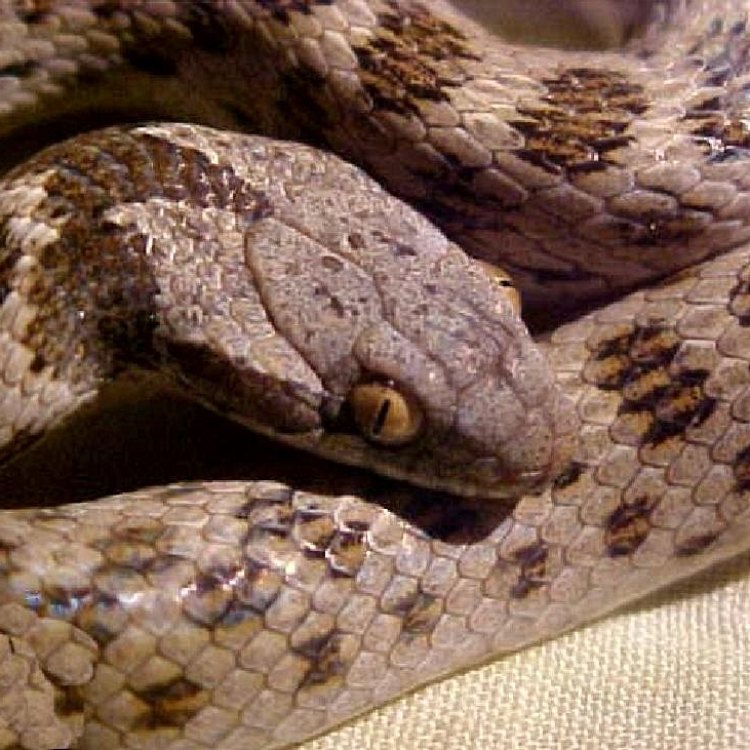
The Texas Night Snake: An Elusive Nocturnal Reptile
Disclaimer: The content provided is for informational purposes only. We cannot guarantee the accuracy of the information on this page 100%. All information provided here may change without prior notice.






